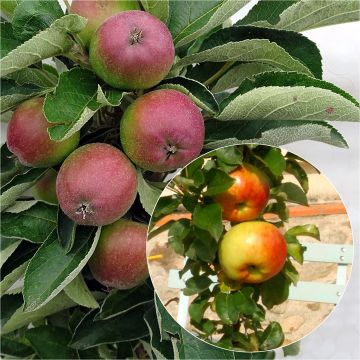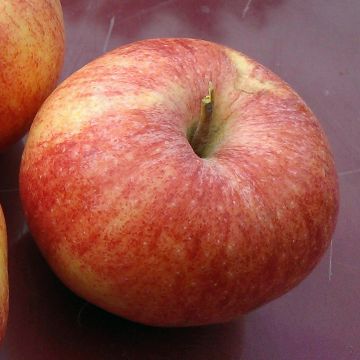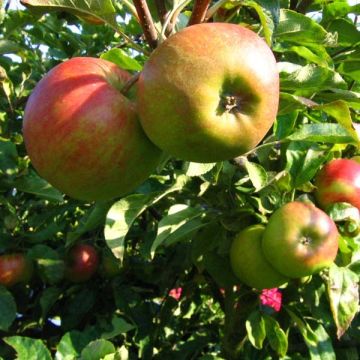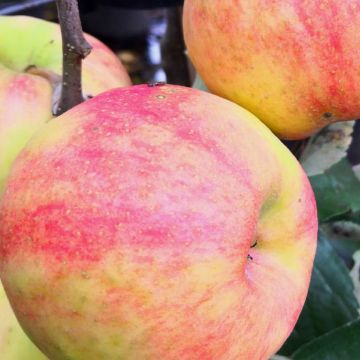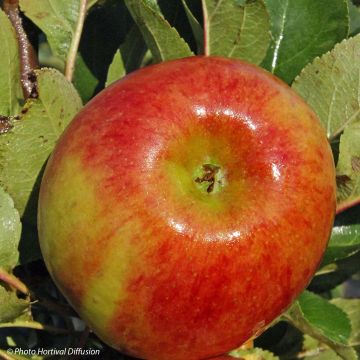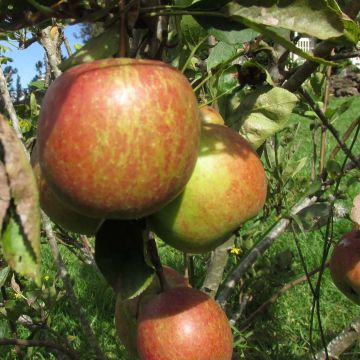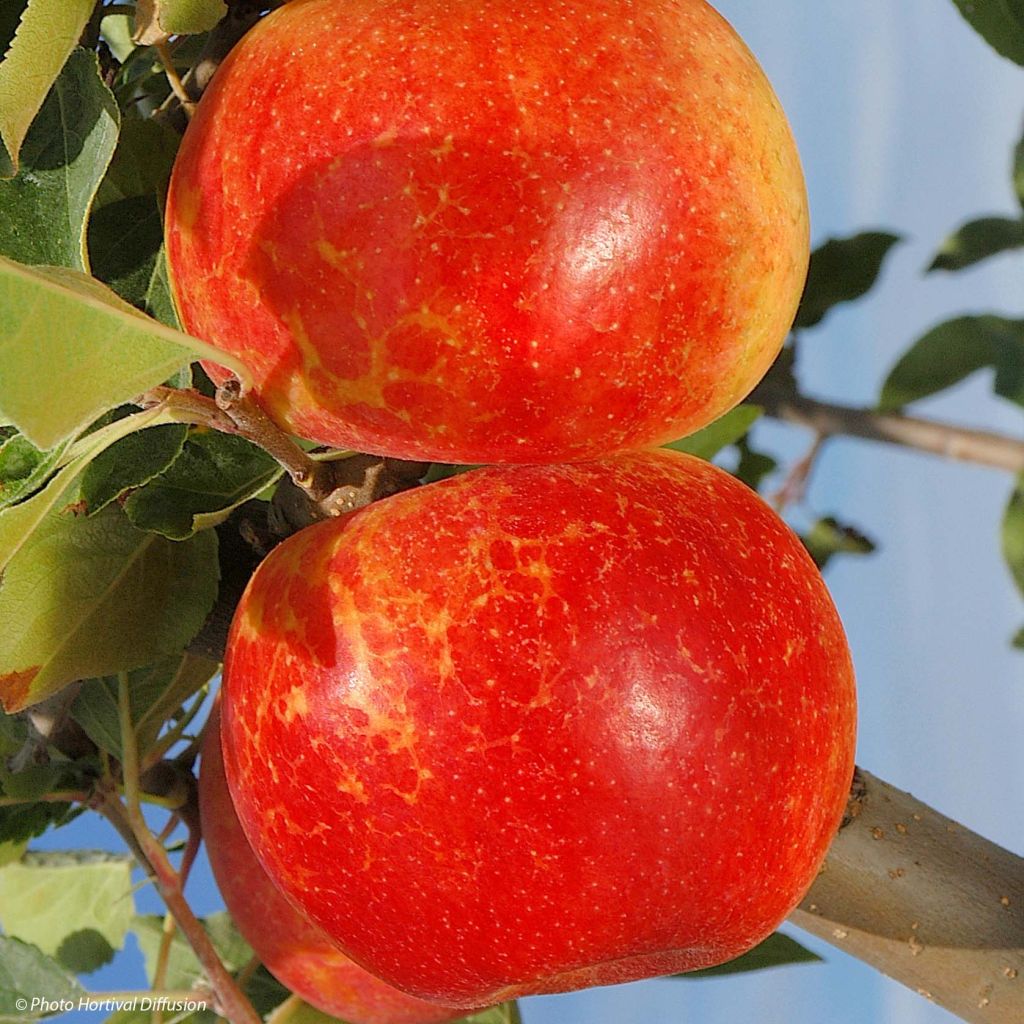

Apple Tree Antares - Malus domestica
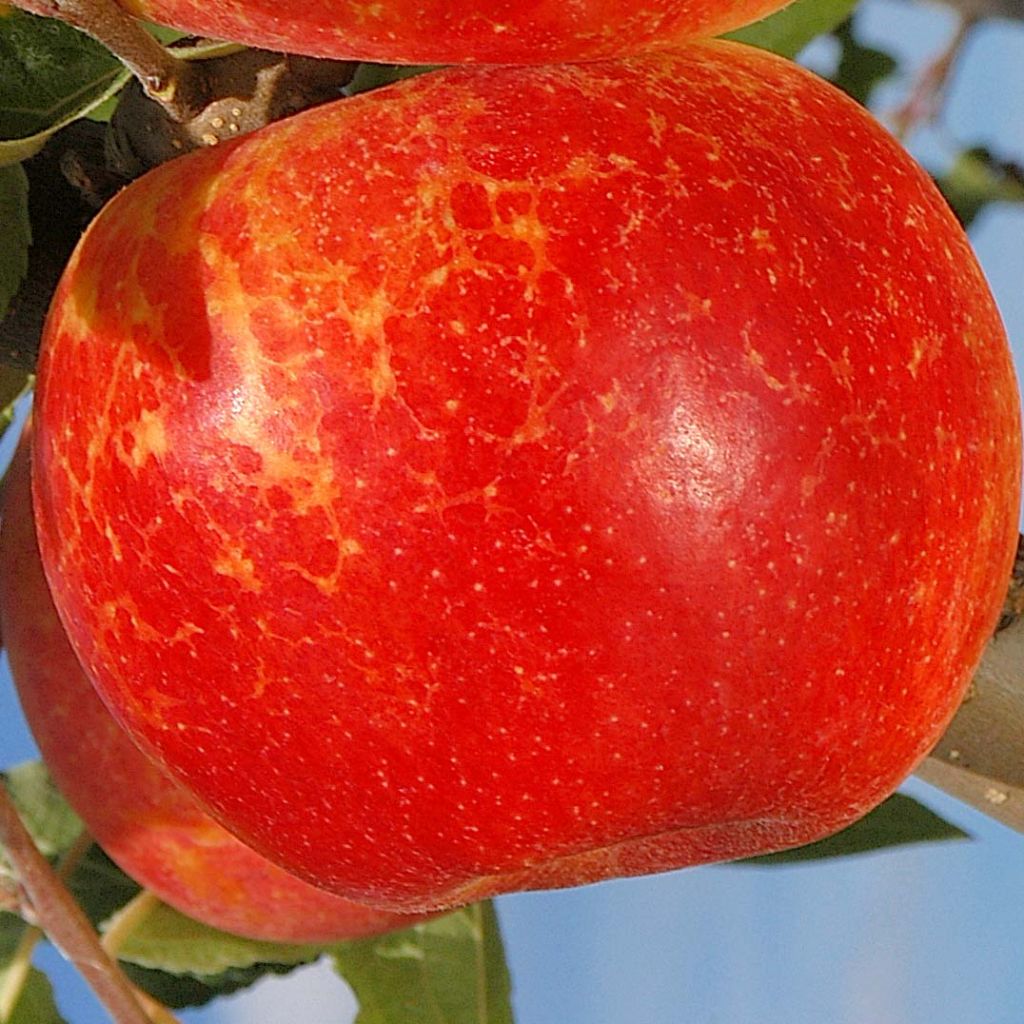

Apple Tree Antares - Malus domestica
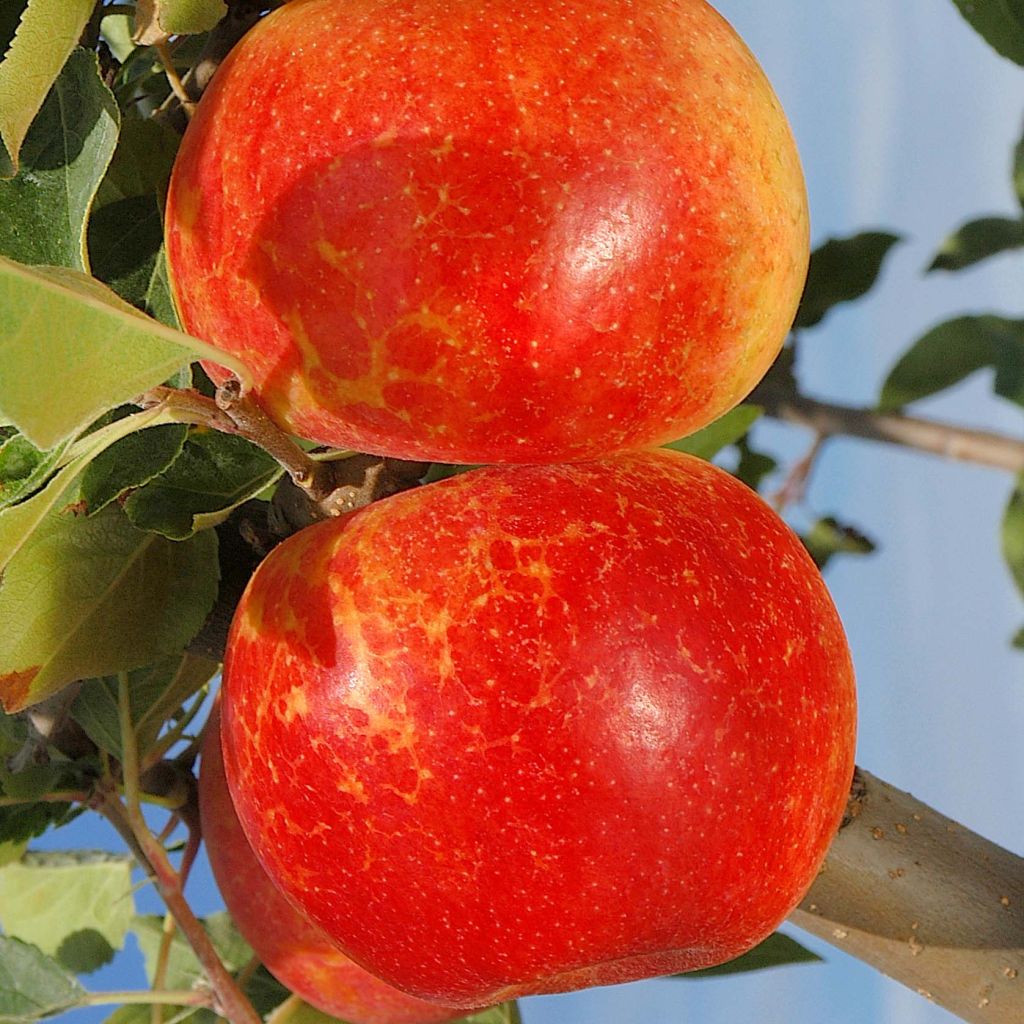

Apple Tree Antares - Malus domestica
Apple Tree Antares - Malus domestica
Malus domestica Antares
Apple, Orchard apple, Table apple, Cultivated apple
Special offer!
Receive a €20 voucher for any order over €90 (excluding delivery costs, credit notes, and plastic-free options)!
1- Add your favorite plants to your cart.
2- Once you have reached €90, confirm your order (you can even choose the delivery date!).
3- As soon as your order is shipped, you will receive an email containing your voucher code, valid for 3 months (90 days).
Your voucher is unique and can only be used once, for any order with a minimum value of €20, excluding delivery costs.
Can be combined with other current offers, non-divisible and non-refundable.
Home or relay delivery (depending on size and destination)
Schedule delivery date,
and select date in basket
This plant carries a 6 months recovery warranty
More information
We guarantee the quality of our plants for a full growing cycle, and will replace at our expense any plant that fails to recover under normal climatic and planting conditions.
Description
The Antares Apple Tree is an appealing variety. The fruits have the appearance of old-fashioned apples, but the tree benefits from modern advancements in selection. Harvest occurs in early September, and the fruits keep well during the winter. They display lovely colours: yellow and orange mix together to create a delicious marbling. On the other hand, the flesh is juicy, crunchy, and not mealy, with a well-flavoured taste that strikes a good balance between sweet and tangy.
The apple tree belongs to the Rosaceae family and has been present in France and Europe since antiquity. The Antares Apple Tree is a recent commercial creation by INRA Angers. The cross-breeding that led to this variety aimed to make Antares resistant to scab and restore an authentic taste to the apple. The Antares Apple Tree is not self-fertile and is pollinated by varieties such as 'Golden Delicious', 'Idared', 'Granny Smith', or 'Reine des Reinettes'.
The apple, with its beautifully coloured skin and fragrant, crunchy flesh, is a real success. Delicious when eaten raw, it is also ideally suited for cooking. When harvested fully ripe and stored correctly, it can be kept in a cool place for up to 7 months. To harvest, pick the apples when they easily detach from the tree with a slight twist of the wrist. Check that the seeds are black inside by cutting open a sample apple. If they are light and firmly attached, you must wait longer. To store, place them flat one by one with the stem facing down in clean wooden crates. The ideal storage location should have a temperature of 8 to 10°C.
Despite the high quality of its apples, this variety does not produce many flowers and, therefore, not many fruits. Thinning will thus not be necessary. Flowering occurs in April and is quite extensive, not fearing spring frosts. This variety will also tolerate winter hardships better in adequately drained soil than in sweltering summers.
Report an error about the product description
Apple Tree Antares - Malus domestica in pictures
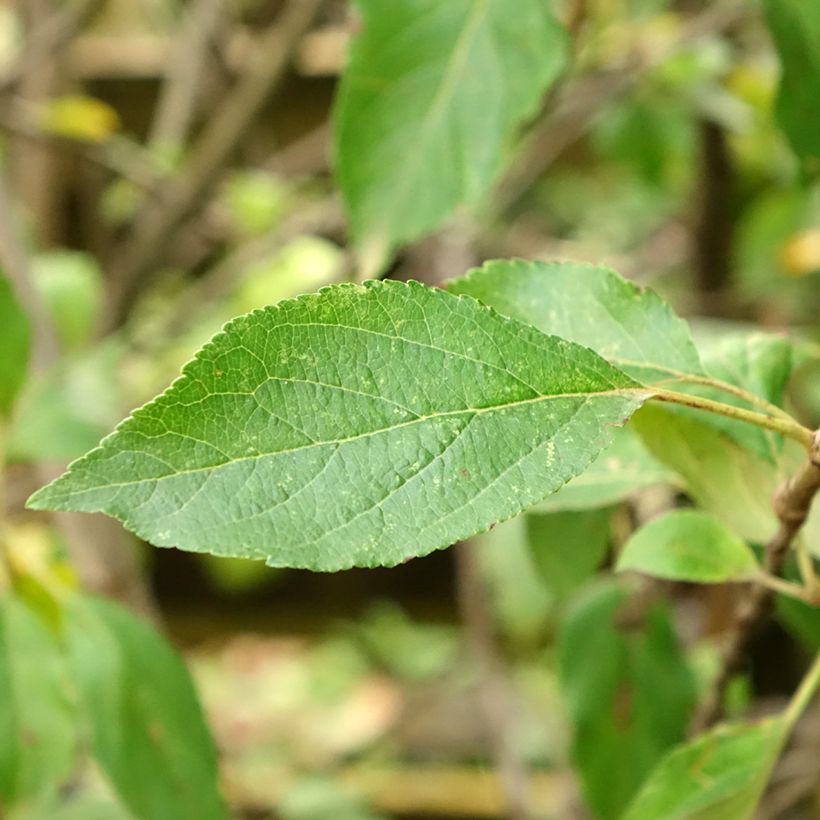



Plant habit
Fruit
Flowering
Foliage
Botanical data
Malus
domestica
Antares
Rosaceae
Apple, Orchard apple, Table apple, Cultivated apple
Cultivar or hybrid
Other Apple trees
View all →Planting and care
Choose a sunny location for your Antares Apple tree; the soil can be slightly chalky or acidic but without excess. Dig a wide planting hole at least three times the volume of the root ball. Simultaneously add organic matter (potting soil, compost...) and a base fertiliser like bone meal. Do not bury the graft collar. Stake if necessary. Water abundantly right after planting, even in winter, even if it rains. Fruit trees are ideally planted between October and November to promote root growth during winter and avoid planting during freezing periods. Container-grown plants can be planted all year round except during extreme heat or frost periods.
You can add a small handful of wood ash, rich in potassium, during winter to improve fruiting. Watch out for possible aphid attacks during the season. A white felt-like growth due to a fungus, powdery mildew, may appear on the leaves in summer; this does not harm fruit development in gardens. Harvest takes place in September. Only keep harvested fruits—store apples with the stem downwards, on shelves or in crates. Choose a preferably completely dark, dry, and cool but frost-free place.
Planting period
Intended location
Care
This item has not been reviewed yet - be the first to leave a review about it.
Haven't found what you were looking for?
Hardiness is the lowest winter temperature a plant can endure without suffering serious damage or even dying. However, hardiness is affected by location (a sheltered area, such as a patio), protection (winter cover) and soil type (hardiness is improved by well-drained soil).

Photo Sharing Terms & Conditions
In order to encourage gardeners to interact and share their experiences, Promesse de fleurs offers various media enabling content to be uploaded onto its Site - in particular via the ‘Photo sharing’ module.
The User agrees to refrain from:
- Posting any content that is illegal, prejudicial, insulting, racist, inciteful to hatred, revisionist, contrary to public decency, that infringes on privacy or on the privacy rights of third parties, in particular the publicity rights of persons and goods, intellectual property rights, or the right to privacy.
- Submitting content on behalf of a third party;
- Impersonate the identity of a third party and/or publish any personal information about a third party;
In general, the User undertakes to refrain from any unethical behaviour.
All Content (in particular text, comments, files, images, photos, videos, creative works, etc.), which may be subject to property or intellectual property rights, image or other private rights, shall remain the property of the User, subject to the limited rights granted by the terms of the licence granted by Promesse de fleurs as stated below. Users are at liberty to publish or not to publish such Content on the Site, notably via the ‘Photo Sharing’ facility, and accept that this Content shall be made public and freely accessible, notably on the Internet.
Users further acknowledge, undertake to have ,and guarantee that they hold all necessary rights and permissions to publish such material on the Site, in particular with regard to the legislation in force pertaining to any privacy, property, intellectual property, image, or contractual rights, or rights of any other nature. By publishing such Content on the Site, Users acknowledge accepting full liability as publishers of the Content within the meaning of the law, and grant Promesse de fleurs, free of charge, an inclusive, worldwide licence for the said Content for the entire duration of its publication, including all reproduction, representation, up/downloading, displaying, performing, transmission, and storage rights.
Users also grant permission for their name to be linked to the Content and accept that this link may not always be made available.
By engaging in posting material, Users consent to their Content becoming automatically accessible on the Internet, in particular on other sites and/or blogs and/or web pages of the Promesse de fleurs site, including in particular social pages and the Promesse de fleurs catalogue.
Users may secure the removal of entrusted content free of charge by issuing a simple request via our contact form.
The flowering period indicated on our website applies to countries and regions located in USDA zone 8 (France, the United Kingdom, Ireland, the Netherlands, etc.)
It will vary according to where you live:
- In zones 9 to 10 (Italy, Spain, Greece, etc.), flowering will occur about 2 to 4 weeks earlier.
- In zones 6 to 7 (Germany, Poland, Slovenia, and lower mountainous regions), flowering will be delayed by 2 to 3 weeks.
- In zone 5 (Central Europe, Scandinavia), blooming will be delayed by 3 to 5 weeks.
In temperate climates, pruning of spring-flowering shrubs (forsythia, spireas, etc.) should be done just after flowering.
Pruning of summer-flowering shrubs (Indian Lilac, Perovskia, etc.) can be done in winter or spring.
In cold regions as well as with frost-sensitive plants, avoid pruning too early when severe frosts may still occur.
The planting period indicated on our website applies to countries and regions located in USDA zone 8 (France, United Kingdom, Ireland, Netherlands).
It will vary according to where you live:
- In Mediterranean zones (Marseille, Madrid, Milan, etc.), autumn and winter are the best planting periods.
- In continental zones (Strasbourg, Munich, Vienna, etc.), delay planting by 2 to 3 weeks in spring and bring it forward by 2 to 4 weeks in autumn.
- In mountainous regions (the Alps, Pyrenees, Carpathians, etc.), it is best to plant in late spring (May-June) or late summer (August-September).
The harvesting period indicated on our website applies to countries and regions in USDA zone 8 (France, England, Ireland, the Netherlands).
In colder areas (Scandinavia, Poland, Austria...) fruit and vegetable harvests are likely to be delayed by 3-4 weeks.
In warmer areas (Italy, Spain, Greece, etc.), harvesting will probably take place earlier, depending on weather conditions.
The sowing periods indicated on our website apply to countries and regions within USDA Zone 8 (France, UK, Ireland, Netherlands).
In colder areas (Scandinavia, Poland, Austria...), delay any outdoor sowing by 3-4 weeks, or sow under glass.
In warmer climes (Italy, Spain, Greece, etc.), bring outdoor sowing forward by a few weeks.































